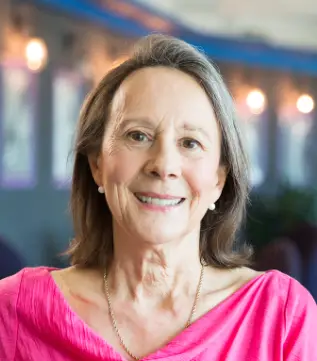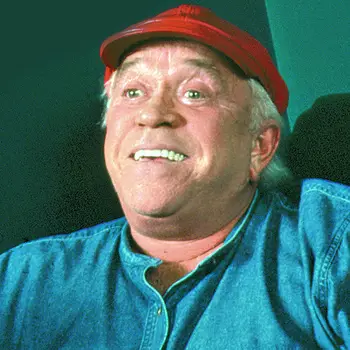James Dyson Biography
James Dyson (Sir James Dyson) is a British inventor, industrial design engineer and founder and chief executive of Dyson Ltd. He is famously known as the inventor of the Dual Cyclone bag-less vacuum cleaner. The vacuum cleaner works on the principle of cyclonic separation.
From August 2011 to July 2017 he served as the Provost of the Royal College of Art. The great inventor then opened a new University on Dyson’s Wiltshire Campus in September 2017.
He went to school at Gresham’s School, an independent boarding school in Holt, Norfolk, from 1956 to 1965, when his father died of cancer. Dyson was great at long distance running: “I was quite good at it, not because I was physically good, but because I had more determination. I learnt determination from it”.
He then spent one year (1965–1966) at the Byam Shaw School of Art. Further, he also studied furniture and interior design at the Royal College of Art (1966–1970) before moving into engineering.
James Dyson Age
James Dyson was born in Cromer, Norfolk on 2nd May 1947. His current age is 72 years old as of 2019.
James Dyson PhotoJames Dyson Net Worth
The great inventor has accumulated a lot of wealth from his great inventions. Dyson is the founder and chief engineer of Dyson Ltd. The company is involved in the design and manufacture of a range of products including vacuum cleaners, fans and hand dryers. The business has had the best-selling cleaners in the U.K. and revenue of 4.4 billion pounds ($5.6 billion) in 2018. He also owns a lot of assets including a farmland. During the year 2017, his net worth was approximately £7.8 billion.
James Dyson Wife| James Dyson Children| James Dyson Son
James Dyson is a married man. His wife is Deirdre Hindmarsh. She is a teacher and painter. Dyson met his wife in 1966 when they were still art students. The two have been married since 1968. Dyson acknowledges that he and his wife are quite similar in many ways including designing their houses and gardens and they disagree about very little. They have lived together happily in their marriage. The couple has three children, one daughter and two sons.
James Dyson Family
James Dyson was born into a middle class family in rural England. He is the son of Alec Dyson, his father who is a teacher and Mary Bolton Dyson, his mother. He is one of their three children. James had a normal childhood like any other normal child. Dyson’s family faced financial concerns. His father died of cancer when he was nine. This tragedy deeply affected the little boy and he felt very lost and insecure without a father figure to guide him.
James Dyson House
James Dyson HouseJames Dyson Inventions |James Dyson Yacht
Dyson helped design the Sea Truck in 1970 while studying at the Royal College of Art. His first original invention, the Ballbarrow, was a modified version of a wheelbarrow using a ball instead of a wheel. Dyson stuck with the idea of a ball, inventing the Trolleyball, a trolley that launched boats. He then designed the Wheelboat, which could travel at speeds of 64 kilometres per hour on both land and water.
In the late 1970s, Dyson had the idea of using cyclonic separation to create a vacuum cleaner that would not lose suction as it picked up dirt. Partly supported by his wife’s salary as an art teacher, and after five years and about 5,127 prototypes, Dyson launched the “G-Force” cleaner in 1983. In June 1993, he opened a research centre and factory in Malmesbury, Wiltshire.
In early 2005, it was reported that Dyson cleaners had become the market leaders in the United States by value (though not by number of units sold).Dyson licensed the technology in North America from 1986 to 2001 to Fantom Technologies, after which Dyson entered the market directly. In 2005, Dyson incorporated the wheel ball from his Ballbarrow concept into a vacuum cleaner, creating the Dyson Ball.
This ball, rather than the static wheels on existing vacuums, enabled it to become more steerable, which was more useful for navigating around obstacles and corners. In 2000, Dyson expanded his appliance range to include a washing machine called the ContraRotator, which had two rotating drums moving in opposite directions.
In 2002, Dyson created a realisation of the optical illusions depicted in the lithographs of Dutch artist M. C. Escher. Engineer Derek Phillips was able to accomplish the task after a year of work, creating a water sculpture in which the water appears to flow up to the tops of four ramps arranged in a square, before cascading to the bottom of the next ramp.
In October 2006 Dyson launched the Dyson Airblade, a fast hand dryer that uses a thin sheet of moving air as a squeegee to remove water, rather than attempting to evaporate it with heat. This allows faster drying, while using much less energy than traditional electrical hand dryers. Another product, launched on 18 October 2009, is a fan without external blades, which he calls the Air Multiplier.
In April 2016, Dyson launched the Dyson Supersonic, a hair dryer with a smaller motor located in the handle so as to provide better balance and smaller size, as well as quieter operation.
James Dyson Interview
Q: What did you learn making these latest products?
James Dyson: Technology is now moving so fast and is becoming ever more complex. Even we, who started off as hardware engineers, now employ more software engineers than hardware engineers. And vision systems people, artificial intelligence people, robotics people. We now have five times the number of engineers to do a product than we were doing 10 years ago. It’s a massive change.
Q: Dyson strikes me as a company that uses hardware industrial design as its main competitive advantage. Do you also need to be doing your own machine-learning software?
James Dyson: Yes. Things like voice recognition — we wouldn’t attempt to do that. But interpretation of vision — what you see with the camera — we are doing. We think that’s key for us. We think batteries are key for us. And robotics. And with the car, there are certain technologies that we’re doing ourselves and it’s certain that we’re buying in. The thing is to be selective and to choose the ones which are really, really important to you and which you can make a real difference. And then buy or direct others in.
Q: What’s your job now? How involved are you in developing new products?
James Dyson: That’s what I do. In the beginning, I did everything — I was on my own, building those 5,127 prototypes, every day. That’s what I was doing, totally hands on, making them myself, testing them myself, and coming in at the end of the day covered in dust. As we’ve gradually become successful and now have 5,000 engineers. I’m obviously not the person making the prototypes, and most of the time I’m not the person coming up with the ideas. My role is that of a sort of old tutor, a slightly grumpy old tutor, going around, saying what he likes and what he doesn’t like, and listening to their ideas and encouraging them.
Q: In your demo, you called extra attention to the specific, clever task of emptying your new vacuum. Why?
James Dyson: We feel quite vulnerable on that point. If the dirt goes into a bag, in theory, it’s sealed in the bag. It isn’t, but that’s what they claim. So emptying a bagless vacuum cleaner is, in theory, a slightly messy task. We’ve wanted to overcome that issue for quite a long time. And I think we’ve gone quite a long way to overcoming it. So I wanted to explain that in some detail.
Q: Dyson products are not cheap. How do you balance design and functionality versus cost?
James Dyson: Cost? We don’t worry about the cost! No, I’m joking. I’m really joking. I’ll tell you what I don’t do. I don’t design down to a price. You can say that’s my undoing. Inevitably what we’re doing costs more and is usually more expensive than what other people are doing. But. A lot of the time you have to make a decision about, “Do I include that?” “Do I not include that?” “Can I afford that?” “Can other people afford that?” And we know that if we add a dollar to the production cost, you’re adding many more dollars to the price in the shop. I’m sure we get it wrong half the time or three quarters of the time — our products are too expensive. But that’s what they are. That’s what we wanted to make and that’s what it is. And, of course, you can buy one that’s cheaper if you want to. And a lot of people do.
Q: How is our relationship with devices changing?
James Dyson: It’s going to have to change, and it will change a lot. They’re going to get incredibly complex — sensors, cameras, artificial intelligence, machine learning. All of this is going to make products very powerful and do extraordinary things. It’s happening. We have the technology now, we can see it happening. But what we don’t want to do is make them complex and difficult for people to operate. I don’t want for people to have to reach for an app to make it work, or to reach for a remote control, which would be wholly inadequate anyway. So I’m for automating things so these things just happen for you.
Q: What parts of the home do you think will become automated? And how is our relationship to our home going to change?
James Dyson: Lights are going to get very interesting because of your circadian rhythm and that kind of thing. That whole thing is going to change. The idea that you come in and switch on the light is in the past. You don’t need that, so you can save the light switch. That’s an obvious, crude example. But I think people are becoming acutely aware that humidity, dryness, it’s important to control that. It’s obviously important to control all the things that make smell and pollution in the home. Floorboards create formaldehyde.
Q: How do you sell design in an era of great uncertainty?
James Dyson: I’m old enough not quite to remember the second World War, but certainly the Cuban Missile Crisis and the whole Cold War, so I think now is actually quite a calm time, in spite of what everyone is saying.
SOURCE: www.vox.com
About InformationCradle Editorial Staff
This Article is produced by InformationCradle Editorial Staff which is a team of expert writers and editors led by Josphat Gachie and trusted by millions of readers worldwide.
We endeavor to keep our content True, Accurate, Correct, Original and Up to Date. For complain, correction or an update, please send us an email to informationcradle@gmail.com. We promise to take corrective measures to the best of our abilities.






